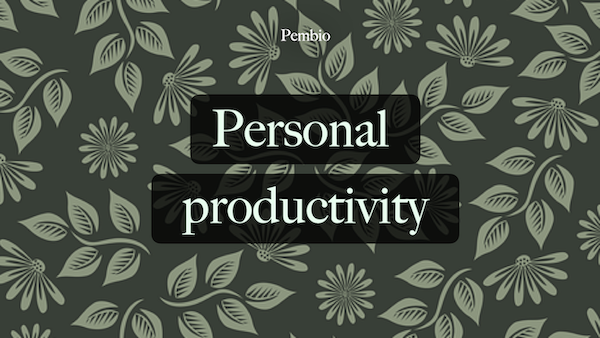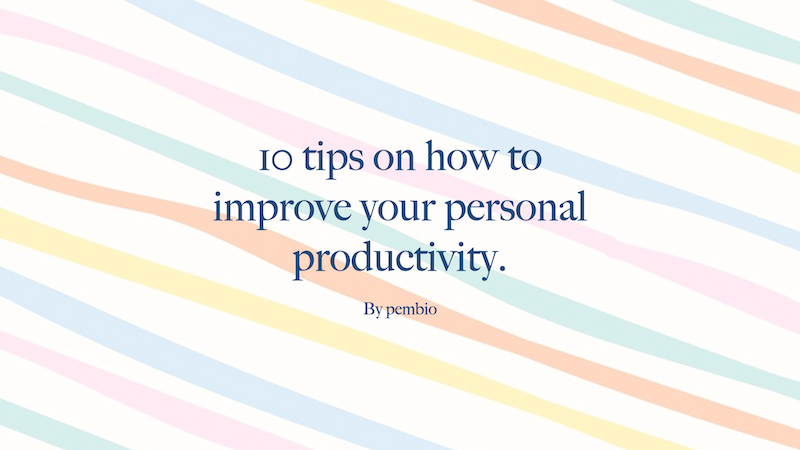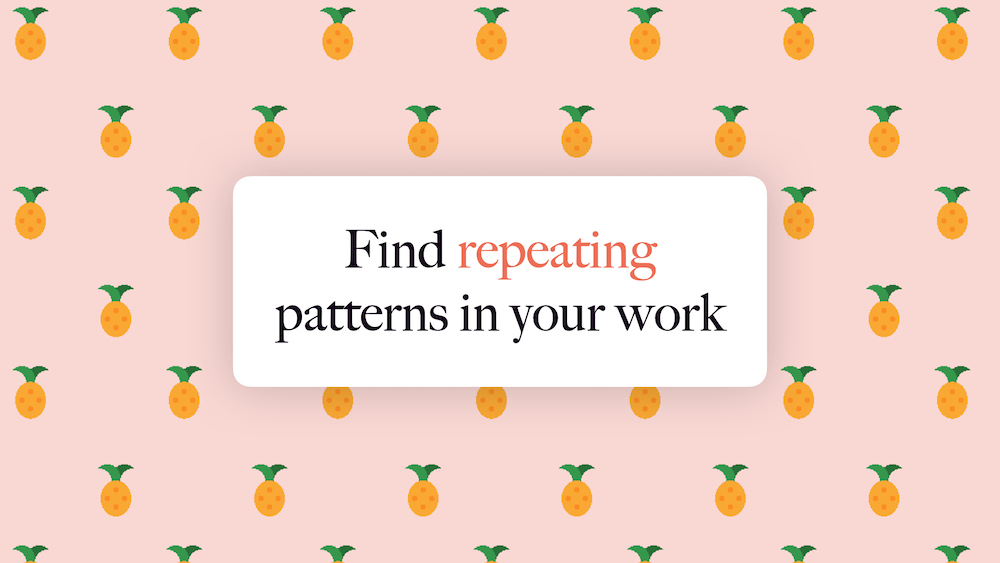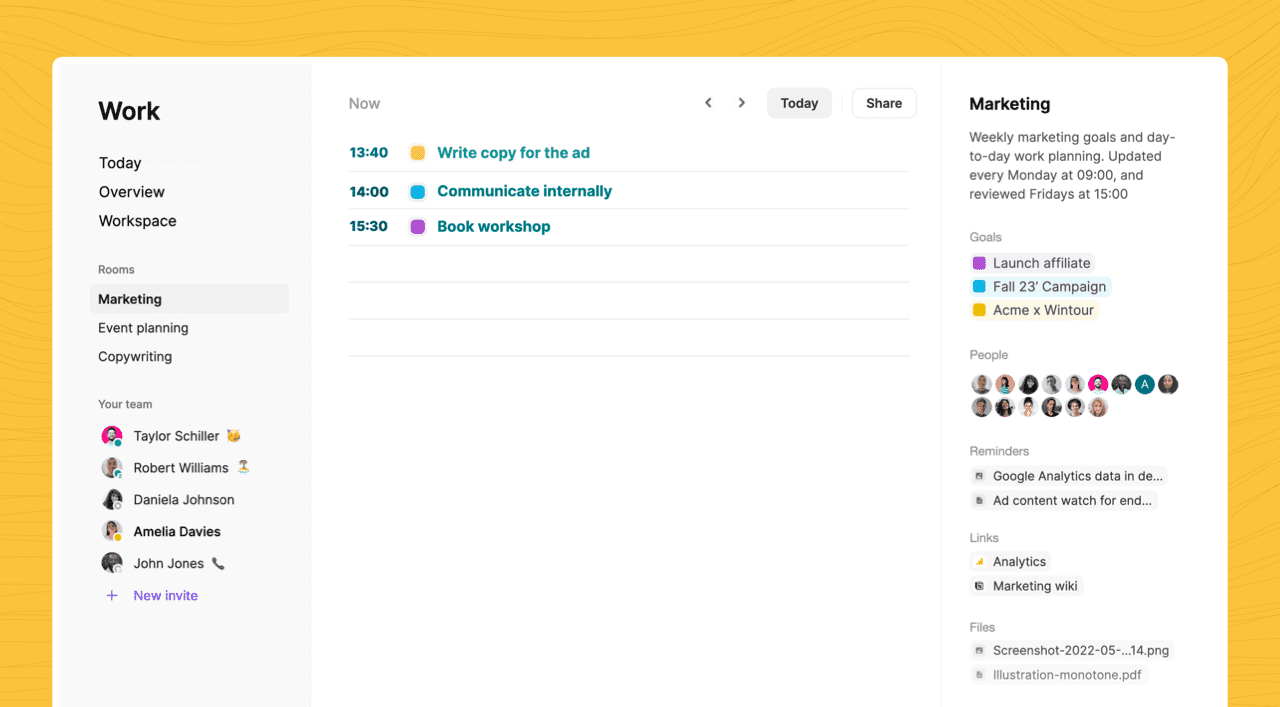Pembio
A curated collection of resources, worksheets and templates within the productivity space.
Get the app ✌️10 Tips to Improve Personal Productivity
Personal productivity refers to how you arrange your duties, objectives, and routines to perform the activities that are most important to you, in an effective and consistent way. It is founded on the productivity strategies you have selected, to prioritize what is most important to your success while maintaining a healthy work/life balance.

Importance of personal productivity
The COVID-19 epidemic turned the working world upside down. Companies have been forced to become much more agile, which has required them to pivot their services, reorganize their workforces, and rapidly transition to working in a flexible or even fully remote capacity. Because of this, there is a greater emphasis placed on personal productivity on an individual level.
This shift causes concern among organizations and decision-makers, as they are unsure whether employees will continue to be as productive while working remotely. Tellingly, 78% of corporate executives believe hybrid and working from home impairs productivity.
However, there is evidence to the contrary, although it is really too soon to draw final conclusions. But nonetheless, rather than depicting a productivity decline, several studies have shown an increase in production levels. And indeed, 94% percent of workers said their productivity was equally high or better, as before COVID & work from home-measures were implemented.
And studies also show that people who work from home waste less time on unproductive tasks (including commuting!) and have fewer interruptions, compared to employees who work in an office setting. How are we, as individuals, adapting our work methods in light of the increased emphasis placed on measuring employee productivity and team cooperation by businesses?
Working remotely implies taking on additional responsibility for controlling our own productivity, but the question is how we go about doing so? While typical productivity trackers focus on the activities themselves, it may be time to adopt a more flexible perspective on productivity.
Perhaps you might even begin to assess productivity "backward." That is, you could start by looking at the output first and then determine the activities and behaviors that led to success and those that got in the way. Because at the end of the day, it’s really the result that matters, rather than the path you took to achieve those outcomes.

Tips to improve personal productivity
Adapting your work flow to the new reality is essential to maintain (or even boost) your productivity at maximum potential. This is the most critical thing you must remember when achieving this goal. If you aren't in the right mindset, no amount of time management software or productivity monitoring tools in the world will be able to help you become more productive. This is because your attitude affects your ability to focus on tasks.
1). Consider the obstacles to your ambitions
At your place of employment, do you often find that you are easily distracted, overloaded, or bored? The first thing you should do to grasp and improve your productivity is to become aware of the quantity of work you are doing as well as the feelings that you are going through at this very moment.
2). Imagine your productive day
Imagine the thoughts and feelings that come to mind whenever the idea of being productive is brought up in conversation with yourself. Where are you at at that moment, and where do you find yourself in terms of your mental state right now? What does your working pattern look like?
3). Create a plan to reach your goal
As part of these adjustments, it is key to ensure the correct level of pressure on yourself. Do not imagine you can attain your goal by wishing for it, nor if you’re taking on too much at once. Both of these mistakes are easy to make. Instead, devise a plan of action, and systematically work your way through your day and week with full focus.
4). Make a daily productivity strategy
Utilizing a productivity planner to map out one's daily tasks is an excellent strategy for tackling each day more productively.
The best way to do this is to clearly plan one's activities. Doing so assists you in visualizing your priorities, which means that if any more work comes up, you will be able to immediately know where to fit it into your plan and how to do it effectively.
5). Prioritize what's most important
If a task is always looming over your head, you should make it a top priority to begin working on it as soon as possible, whether that day or that week. If you can get the item on your to-do list that causes most stress out of the way first, you'll be in a much better mental state to take care of the other things on your list.
6). Divide large jobs into parts
If the sheer scope of a project makes you feel overwhelmed, one way to cope is to break the job down into several smaller items. Completing the project in smaller chunks adds a tangible feeling of being more in control of your workload and allows you to measure the progress you’re making in an efficient manner.
Simply put, as soon as you start checking off individual items on your list of things to achieve, you will have the understanding that you are making progress toward accomplishing the overall target. This is because each item crossed off represents a step closer to attaining the overall goal.
7). Give yourself incentives to keep going
Don’t forget to celebrate your wins and reward yourself regularly for the tasks you accomplish. Having something waiting for you at the end of your day or week, whether it's a dinner with friends, a few minutes to look through your social media page, or a 10-minute screen break will make you feel much more motivated to finish your to do-list.
8). Take your breaks
Also, scheduling breaks throughout the day helps with a range of issues, including improving focus and reducing stress levels, among other things.
Therefore, while you may think that missing lunch is a smart way to cram in extra time to work, you may in fact prevent yourself from reaching your full potential - simply because you’re more drained and exhausted than if you had a bite to eat!
9). If possible, delegate or automate chores
When you have too much on your plate, it’s easy to feel overwhelmed and begin procrastinating. This is a dangerous state to enter - so instead of feeling lost for air, you need to prioritize what's most essential.
For those less pressing matters, ask for help. Find someone who can assist, or even better, figure out a way to let technology do the work for you. You could, for instance, deploy a bot to distribute and collect replies to a survey.

10). It's vital to look for repeating patterns in your work
Keep a detailed account of the hours you put in, noting both the time you spend working and the time you spend doing other things. Maintaining an accurate log of the hours you put in is essential.
After you have collected some data, you should examine it and look for patterns to figure out which factors contributed to your increased productivity and which factors contributed to your decreased productivity.
After doing this, you can determine which factors contributed to your increased productivity and which contributed to your reduced productivity. Based on this knowledge, you may devise a more effective strategy for doing your task. For example, if you’re a morning person - start that day doing some heavy lifting at work, take a break midday to recover some energy, and then take on some simpler tasks in the afternoon.
Conclusion
People and organizations may manage their time, carry out their responsibilities, and achieve their objectives more efficiently and effectively if they organize their work flow according to the productivity methods that work best for them. As individuals and organizations grow more mature and adjust to the new normal of remote work, it’s important that you figure out what type of work flow works best for you, too, to make sure you’re performing at your best levels.
By: Johan Flodgren

The goal planning app that will skyrocket your productivity
A brand new productivity app - empowering you, or your entire team, to get the most important work done with stunningly simple goal planning.
Get started for free